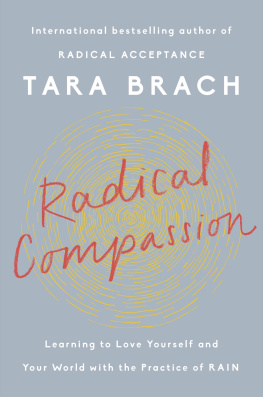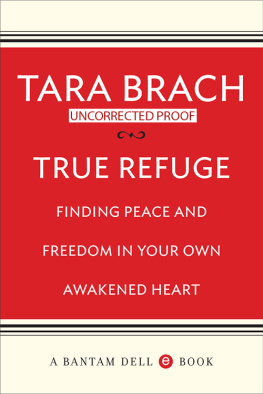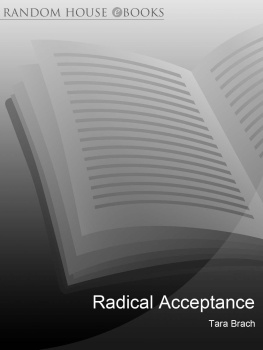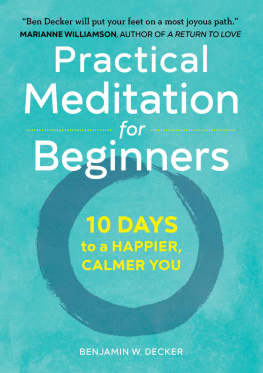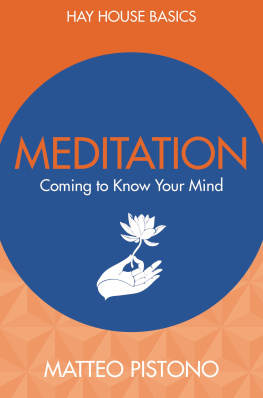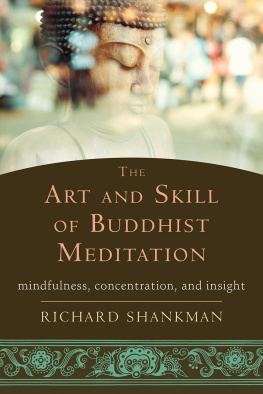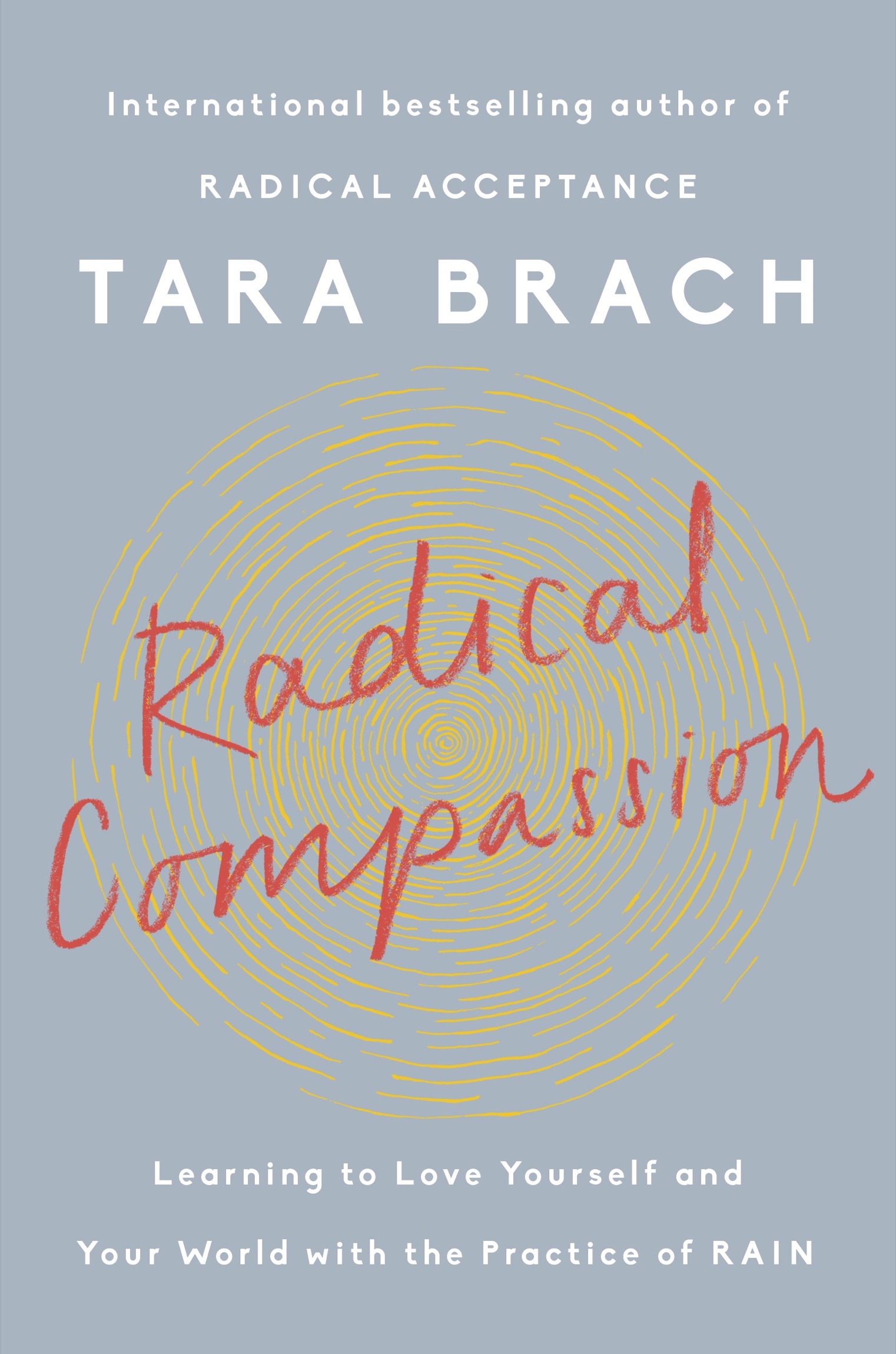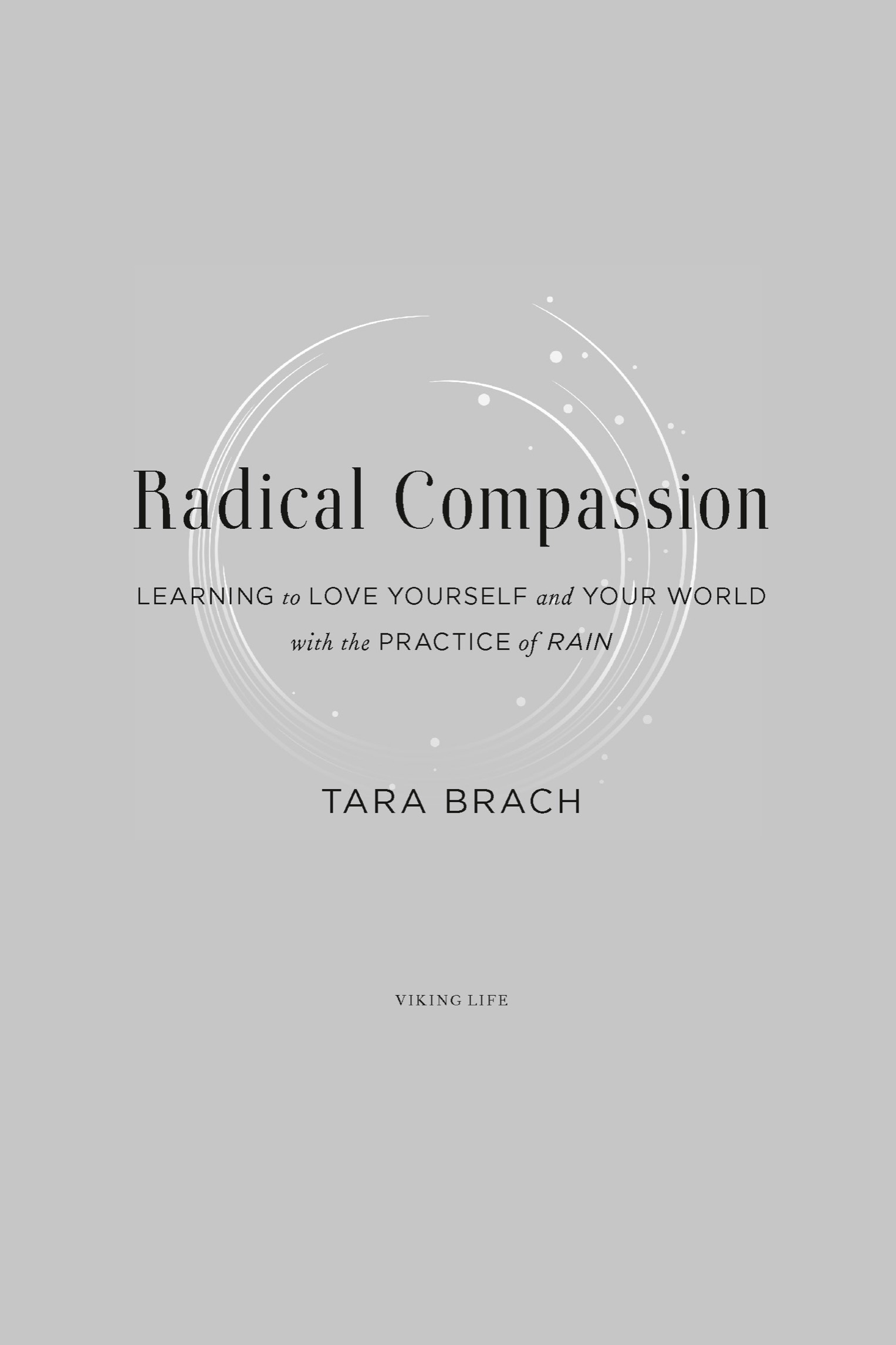PREFACE
LOVING OURSELVES INTO HEALING
Many years ago, I read a moving article by a hospice caregiver who had accompanied thousands of people during their final weeks. One phrase in particular has stayed with me. After countless hours listening to the thoughts of the dying, the caregiver summed up their greatest regret with these words: I wish Id had the courage to live a life true to myself.
I started asking myself questions like these: What does it mean to live true to yourself? Do you feel that your life is aligned with what matters to your heart? Are you living true to yourselftoday? Right now? A few months later, I began asking the same questions of my meditation students.
What I found is that this regret of the dying is also true for many of the rest of us. My students tell me that being true to themselves means being loving, present, and authentic. They speak of being honest, serving others, serving the world. They talk about expressing their creativity, believing in their own worthiness, and working at what they love. And about having the strength to grow beyond their insecurities and to reconcile troubled relationships.
They also say that almost daily they lose sight of these aspirations and intentions. Instead, they get caught up in reactivityself-judgment, blaming others, pettiness, selfishness, living on autopilot. As one student said, Each day theres a big gap between whats possible and how Im actually living my life. And with that comes an ever-lurking sense of personal failure.
I know that feeling of failure intimately. For many years, the trance of unworthiness kept me feeling deficient as friend and daughter, partner and parent. It fueled doubt about my capability as therapist and teacher. And when I faced severe physical illness, it initially triggered self-blame: What did I do wrong to get so sick?
Yet this very sufferingfeeling deficient and disconnectedhas also been my most fertile ground for waking up. It has led me to a spiritual path and practices that I cherish. And when I get stuck in painful emotions, it brings me to a repeating realization, an insight that has profoundly changed my life: I have to love myself into healing. The only path that can carry me home is the path of self-compassion.
It doesnt matter if Im caught in anger, fear of failing at something important, a sense of self-doubt, or loneliness. And it doesnt matter if Im facing yet again challenges to physical mobility and well-being. The healing medicine always has some flavor of care, compassion, or forgiveness. On some level, Im telling myself, Please, be kind. This turning toward loving presence is the gateway to living true to ourselves.
Radical compassion means including the vulnerability of this lifeall lifein our heart. It means having the courage to love ourselves, each other, and our world. Radical compassion is rooted in mindful, embodied presence, and it is expressed actively through caring that includes all beings.
Theres an image I love that shows mindfulness and compassion as inseparable dimensions of awakening. It depicts awareness as a bird with two wings: When both wings are unfurled in their fullness and beauty, the bird can fly and be free.
Im writing this book to share a practice of radical compassion that brings alive the wings of mindfulness and compassion when we most need them. It helps heal and release the painful beliefs and emotions that keep us from living true to ourselves. This practice is called RAIN. The name is an acronym that stands for the four steps of Recognize, Allow, Investigate, and Nurture. Working with these four steps has given meand can give youa reliable way to find healing and freedom right where you are in the midst of emotional pain.
As youll see, these steps are easy to learn, and they can be a lifeline in moments when you feel stressed, fearful, reactive, and confused. These same steps, revisited again and again, build internal resilience and trust in your own wise, awakening heart. They will help you respond to life in a way that expresses the truth and depth and spirit of who you are. This is the gift of RAIN: living from your full potential.
I was not the first to use the acronym RAIN. As some readers may already know, it was originally introduced as a meditation guide by the senior Buddhist teacher Michele McDonald in the 1980s, and since then it has been adopted and adapted in various ways by mindfulness teachers. Over the past fifteen years, Ive evolved my own approach to RAIN, adding a step (N-Nurture) that directly awakens self-compassion. With this crucial emphasis, RAIN cultivates the synchronistic power of mindfulness and heartfulnessboth wings of awareness. Ive now shared this version with hundreds of thousands of people. The response has been tremendous, with people from around the world reporting how RAIN has brought a mindful, caring presence directly to the tangles of their daily lives, increasing their capacity for intimacy, releasing them from addictive behavior, empowering them in their work in the world, and supporting them in times of crisis. They tell me they can finally hold themselves with compassion and bring this same compassion to others. And they talk about the gift of inner freedom, of realizing who they are, beyond any story of self.

